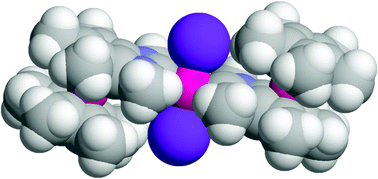Fused polycyclic nucleophilic carbenes – synthesis, structure, and function
Abstract
Interest in stable nucleophilic carbenes has grown rapidly since the isolation of the first “bottle-able” example in 1991. Not only has the structural variation of this class of compounds seen an incredible expansion from laboratories around the world, but the chemical reactivity of these compounds has opened many new opportunities for improvements in chemical transformations and invention of new processes. This article reflects our particular interest in fused polycyclic carbenes and focuses on this broad chemical class from both a structural and reactivity perspective.

- This article is part of the themed collection: N-heterocyclic carbenes

 Please wait while we load your content...
Please wait while we load your content...